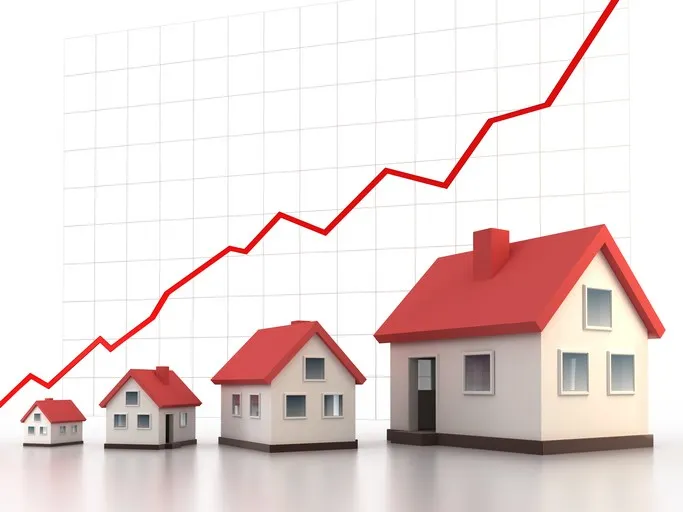Here’s How The Housing Boom Affects Closeouts And Retail Sales.

The US housing market is still in a frenzy as pandemic-induced demand intensifies a longstanding housing shortage. In October, the number of existing homes sold across the country rose by almost 1% even as home prices kept increasing. The strong market builds equity in consumers homes, prompting them to feel better about their finances and spend more money. Closeouts have been popular not only as overstock buyers and surplus liquidators are willing to spend more, but homes need to be furnished. Businesses wanting to sell excess inventory have a large market of consumers looking to buy liquidation stock. After 15 straight months of rising prices, the median price for a home in the third quarter of 2021 hit $404,700, up nearly 20% from the year before.
Home prices appreciated by four to five percent per year from 2013 through the first half of 2020. Again, this lead to closeouts and overstock inventory selling well as consumers had an appetite to buy liquidation stock and wholesale liquidations.Surplus liquidators specializing in aftermarket and excess merchandise discovered the pandemic actually drove sales, rather than slowed sales. This was a fairly stable era for the economy and interest rates, but with decelerating population growth. (Population helps drive demand for housing.) In the summer of 2020, though, housing prices began accelerating. Homeowners often shop discount stores to buy liquidation stock, overstock merchandise and discontinued inventory.
Low mortgage rates drove this housing boom in late 2020 and early 2021. The Federal Reserve poured newly printed (virtually printed) dollars into the financial system, driving interest rates down. Mortgage rates were a little slow to fall at first, but by July 2020 had hit 3.0%, an all-time record low. As more people bought houses, there was demand for closeouts and home décor liquidations to fill all the homes.Businesses that need to sell excess inventory have little resistance to selling off old inventory and surplus to individuals needing closeout merchandise. Surplus liquidators opened new stores, had warehouse sales and organized liquidation sales to the public to meet the demand.
Today’s housing situation has its roots in the last boom-bust cycle, Murphy said: “The context here to this current housing moment is that we were still recovering from the 2008-2009 foreclosure crisis,” when property values plummeted. Some data suggests the seeds were sown even earlier than the last housing crash: Over the past two decades, the National Association of Realtors identified what it called an "underbuilding gap" of between 5.5 million and 6.8 million housing units since 2001. Retailers were forced to buy up liquidation stock, closeouts and discontinued merchandise. If you ever wanted to know how to liquidate inventory, this was a great opportunity. Closeout liquidators specialize in buying unwanted inventory from importers who have too much merchandise or are shutting down their 3PL warehouse.
Today, nearly all of the new homes being built are aimed at the upper echelon of home buyers. The National Association of Home Builders found that of all the new single-family homes built last year across the U.S., none were priced below $100,000. A mere 1 percent fell in the range of $100,000 to $150,000.
The real estate market has emerged as a boom for sellers and a source of worry for buyers in the middle of this epidemic. Home prices have been increasing in the mid-single digits for many years. Recent double-digit price rises reflect the convergence of exceptional demand and chronically low supply. As consumers feel better about their personal finances they spend more on excess merchandise and closeouts. Some big box retailers benefiting from housing prices are TJ Maxx, Burlington Coat Factory and Ross Stores. Prices are increasing as a result of enough money on the sidelines and very low mortgage rates. The improving economy and the approaching peak home buying years of millennials are driving a residential housing boom. Liquidation buyers and wholesale surplus buyers should be kept busy. Closeouts are always available in a healthy economy as importers need to get rid of old inventory and make room for new merchandise in the warehouse.
Will the housing Market Crash in 2022? Probably not. The home price growth in the United States will “moderate” or slow down in 2022. With 10 years having now passed since the Great Recession, the U.S. has been on the longest period of continued economic expansion on record. As discount retail stores like Walmart and Costco do well, buyers for closeouts and closeout liquidators should also do well. Companies that liquidate inventory will be in demand. The housing market has been along for much of the ride and continues to benefit greatly from the overall health of the economy. However, hot economies eventually cool and with that, hot housing markets move more towards balance. Housing market forecasts are essentially informed guesses based on existing patterns.



